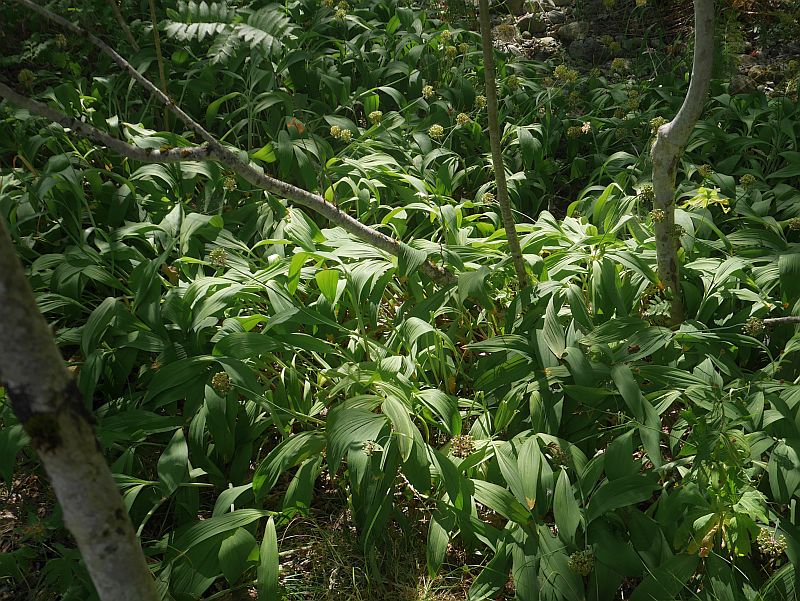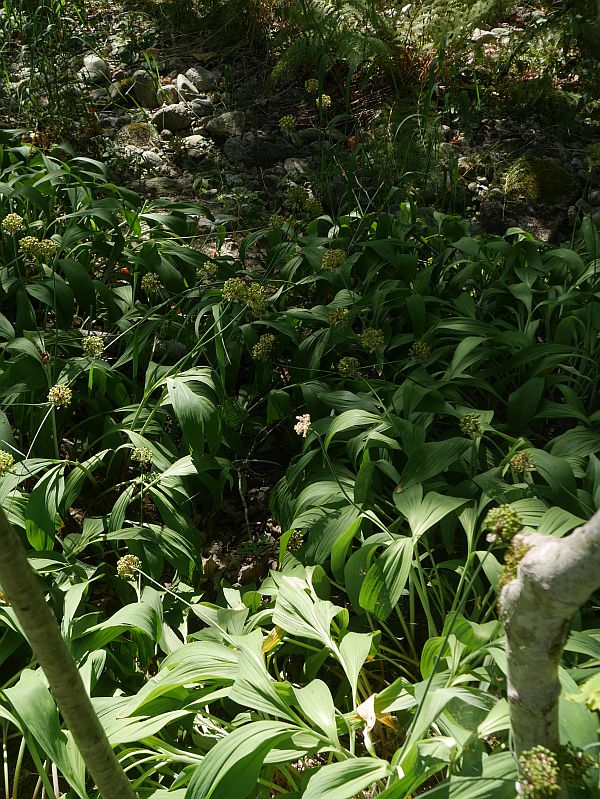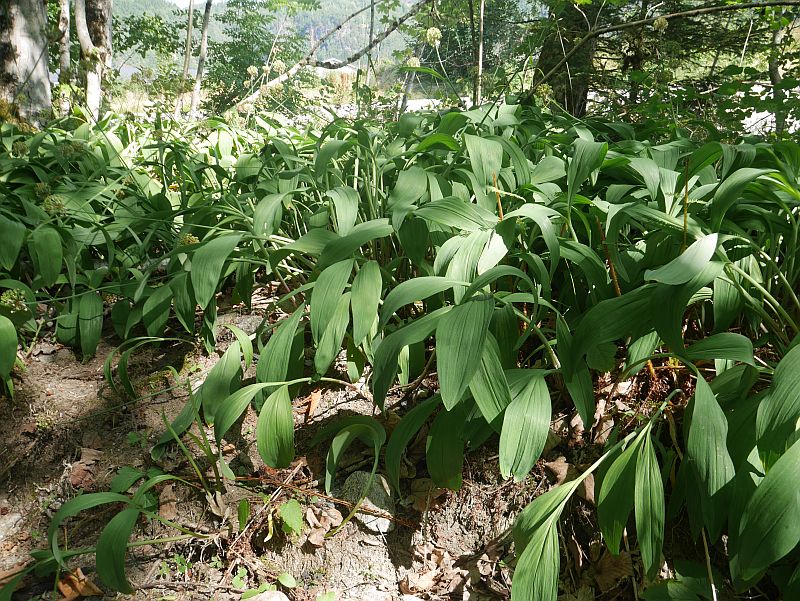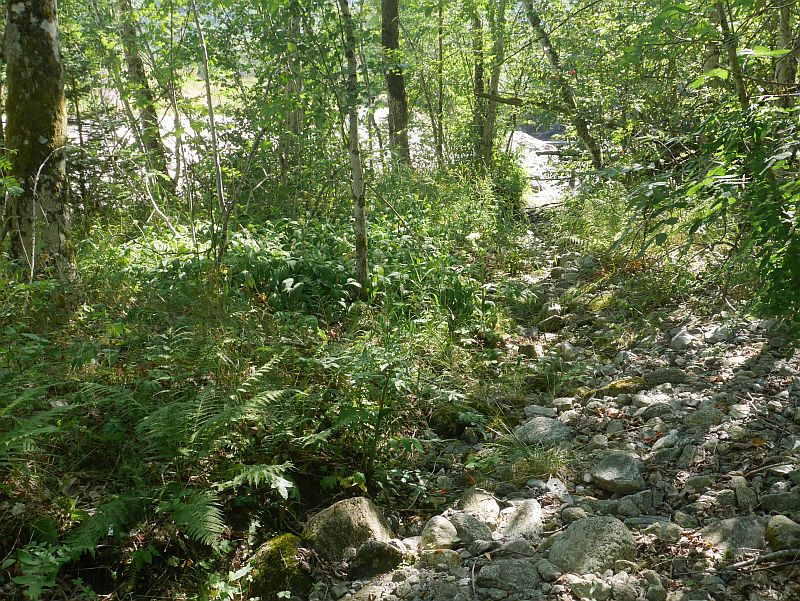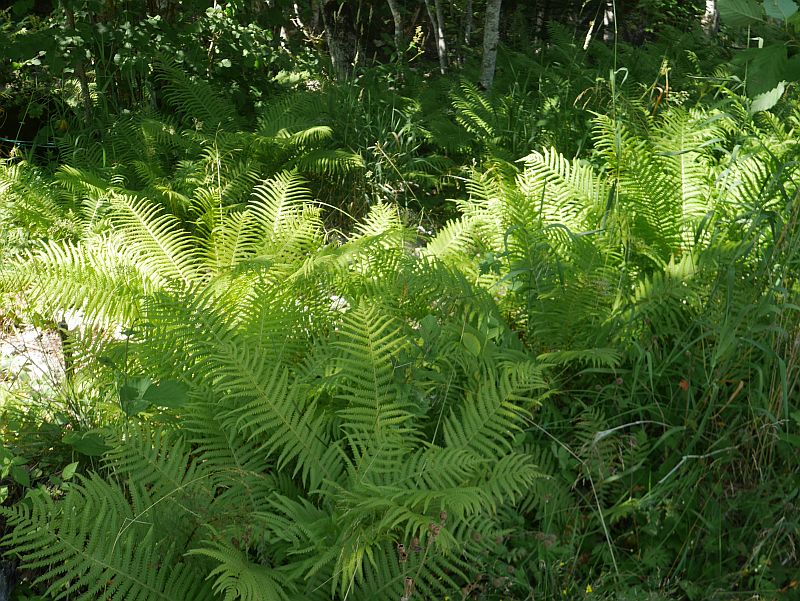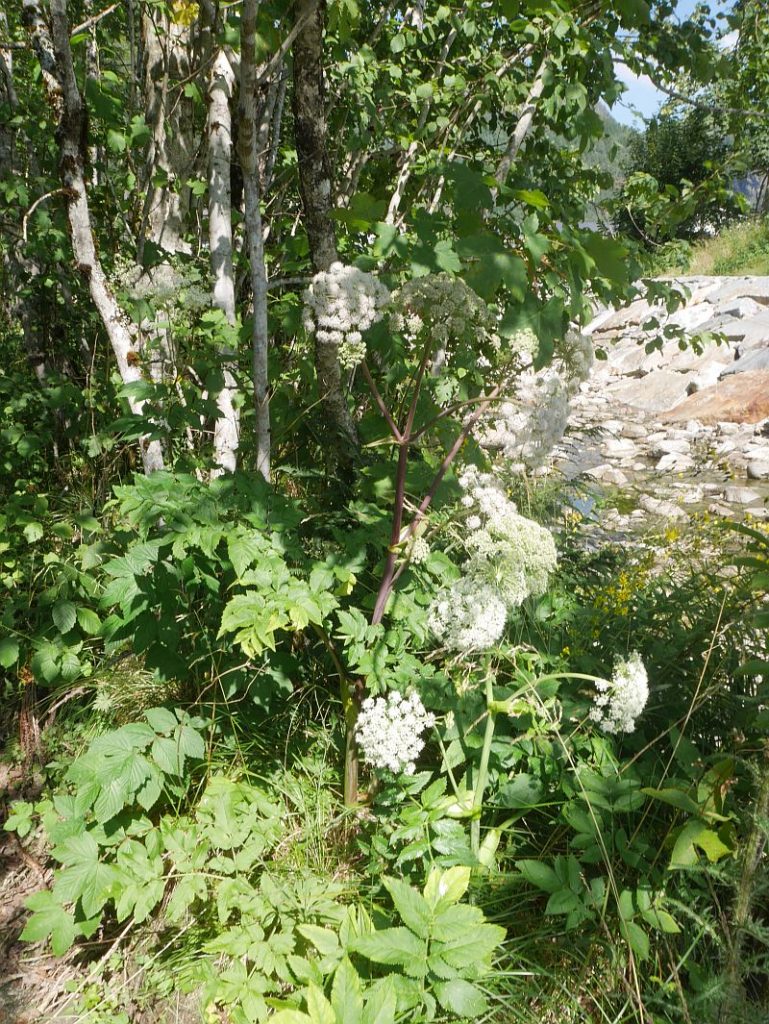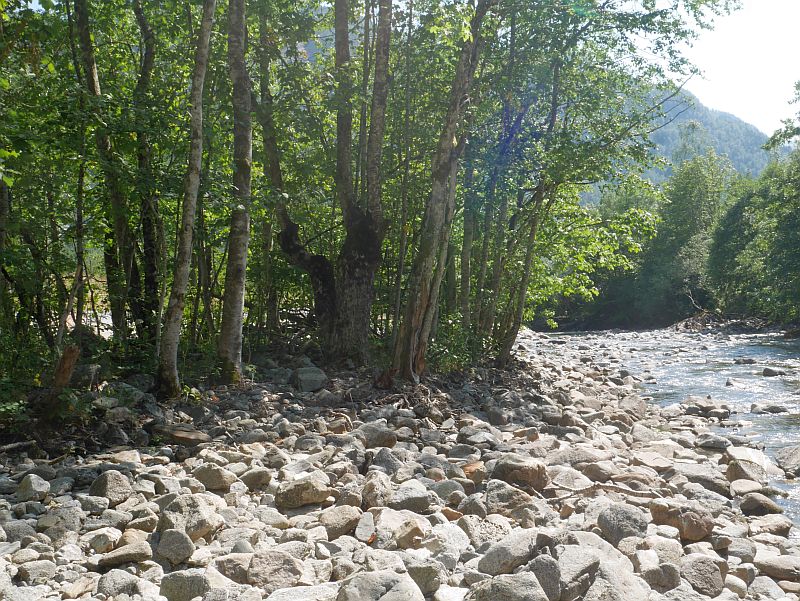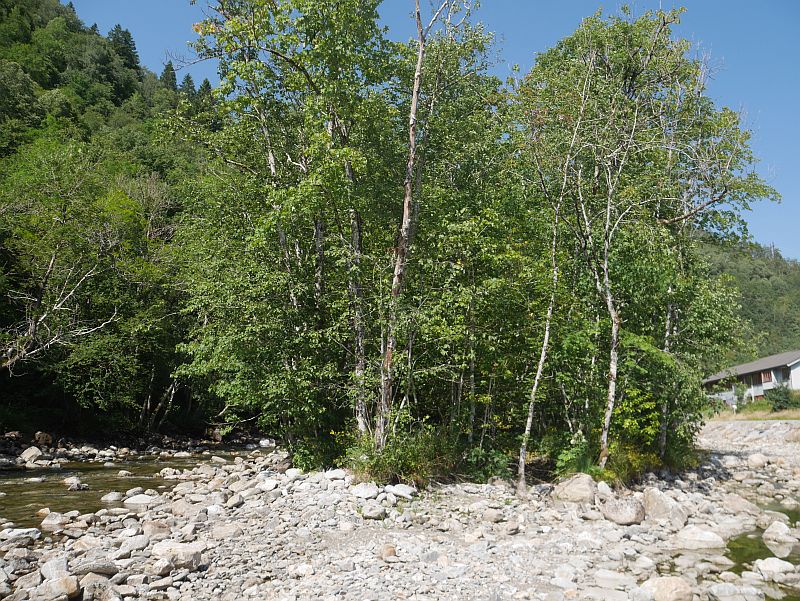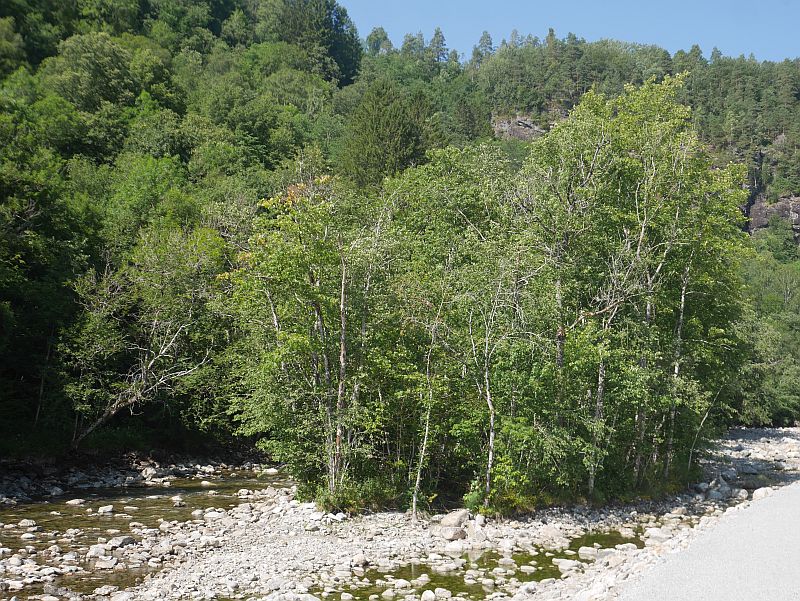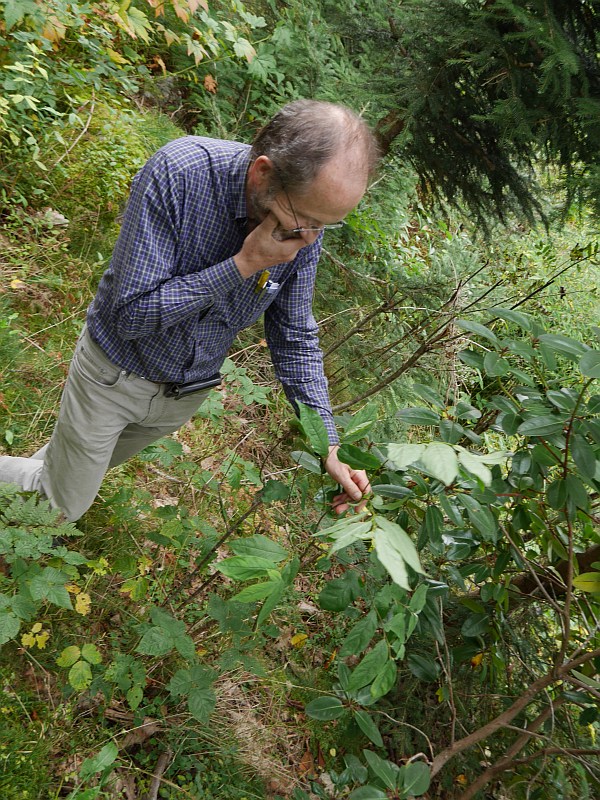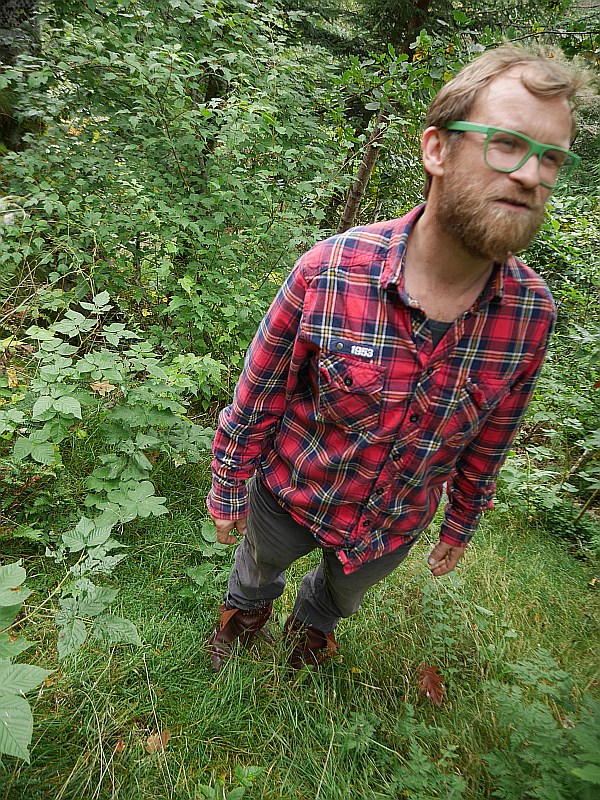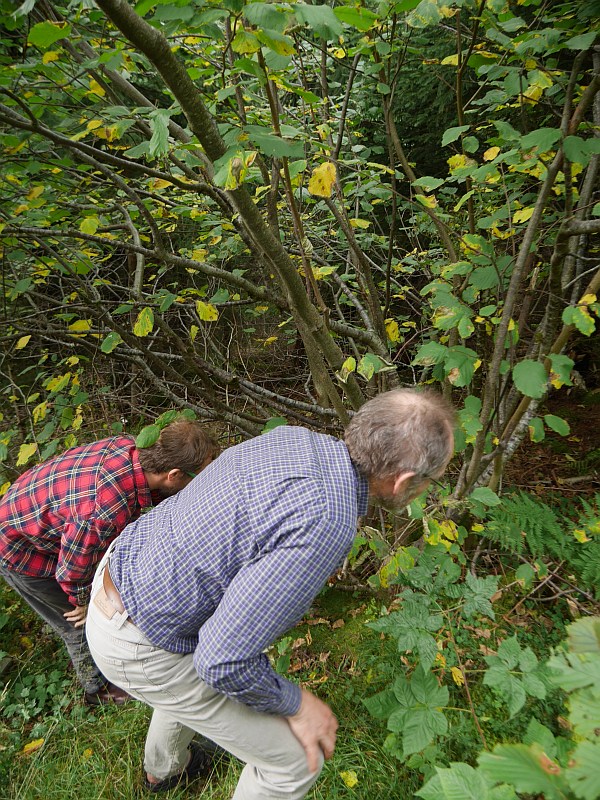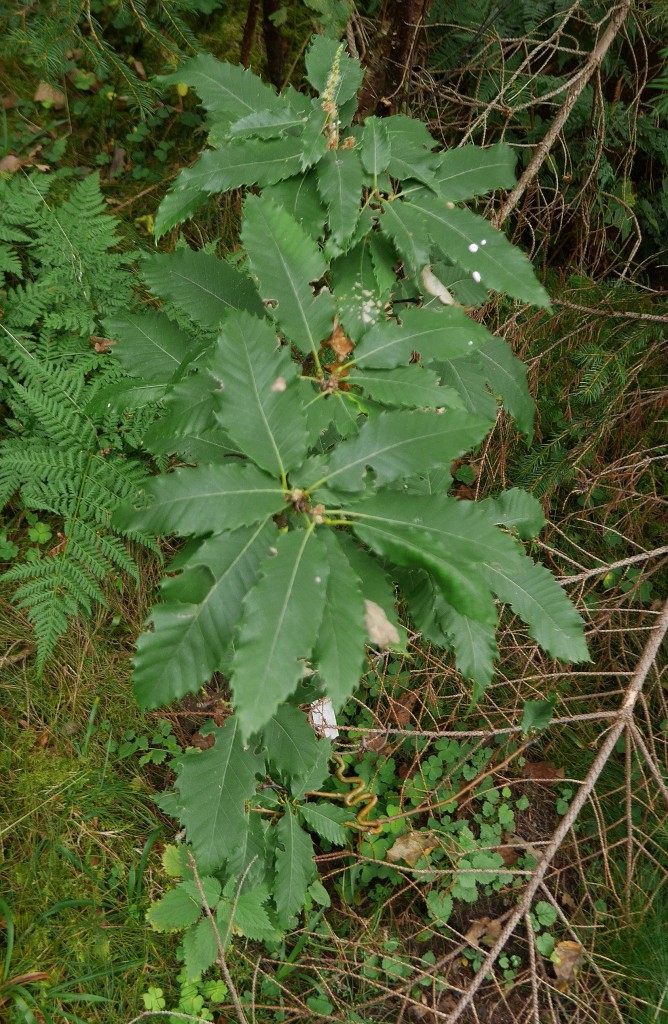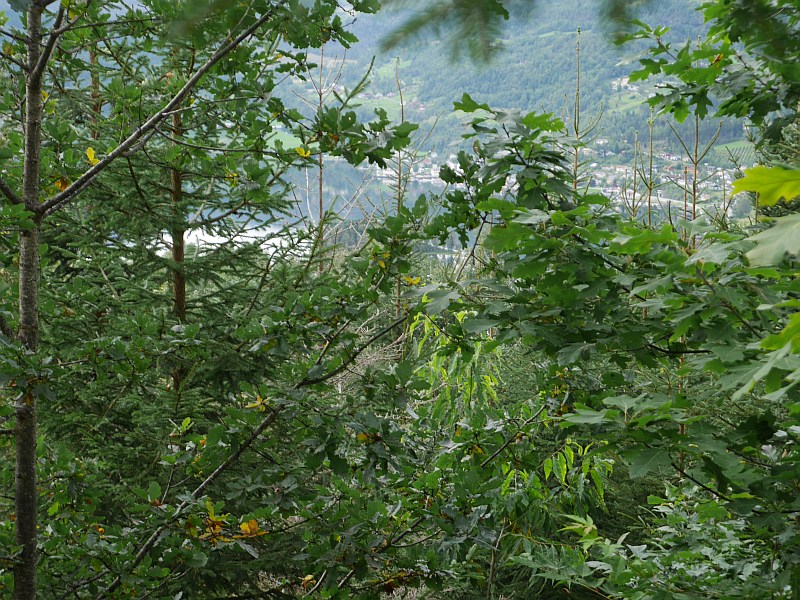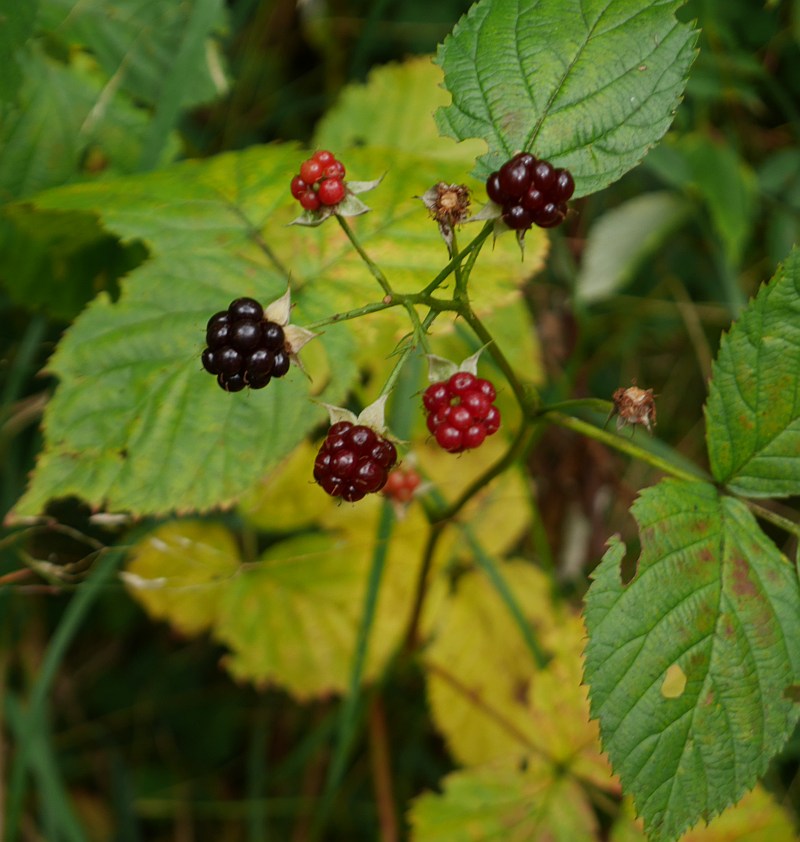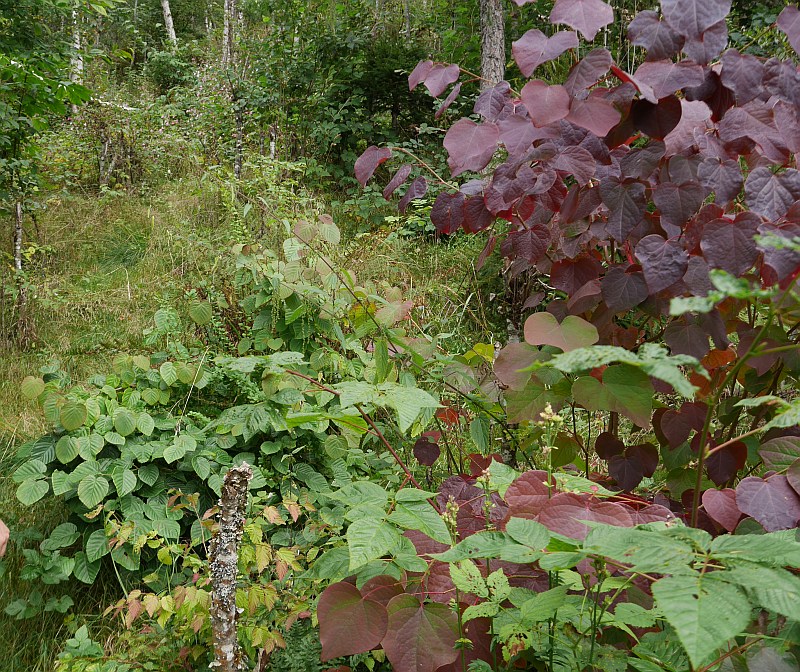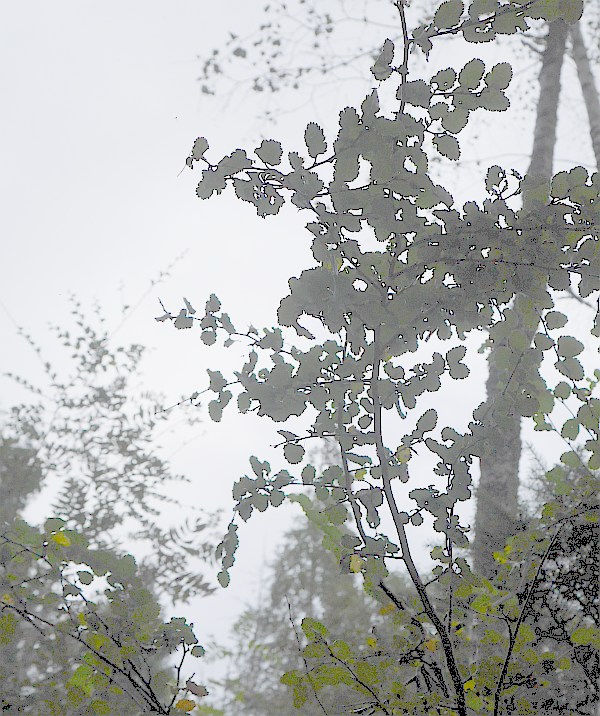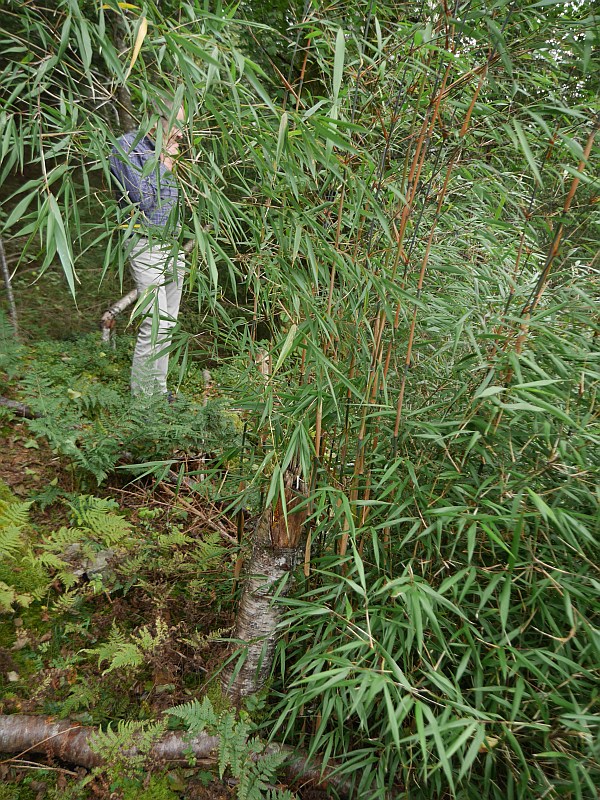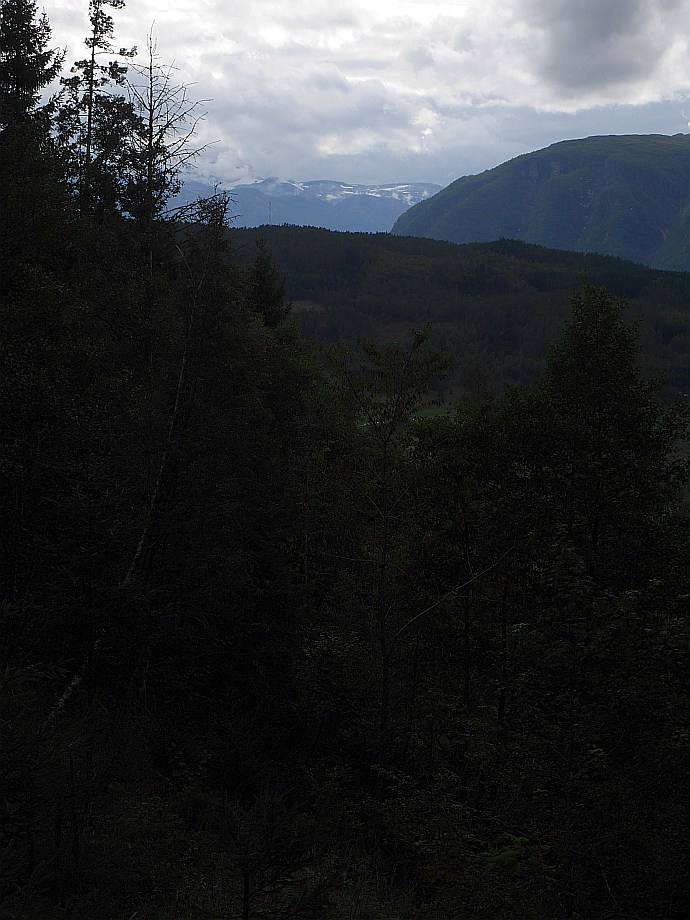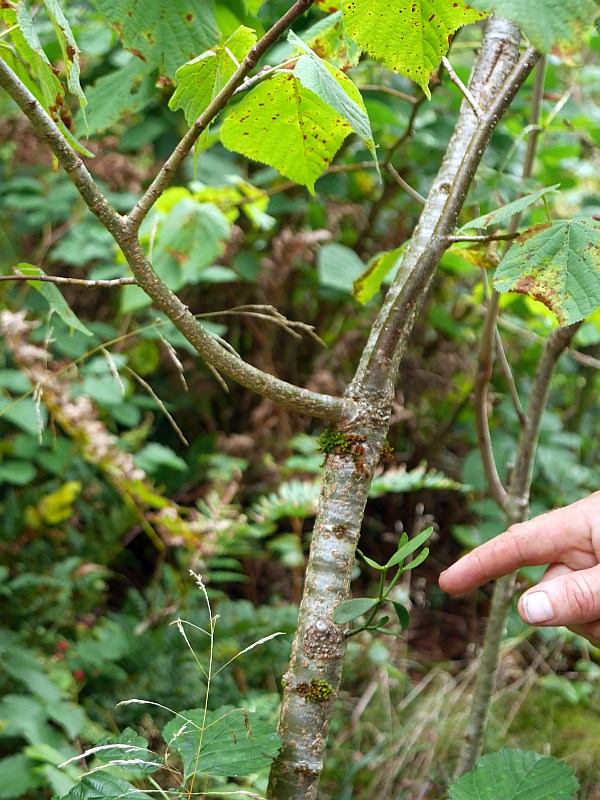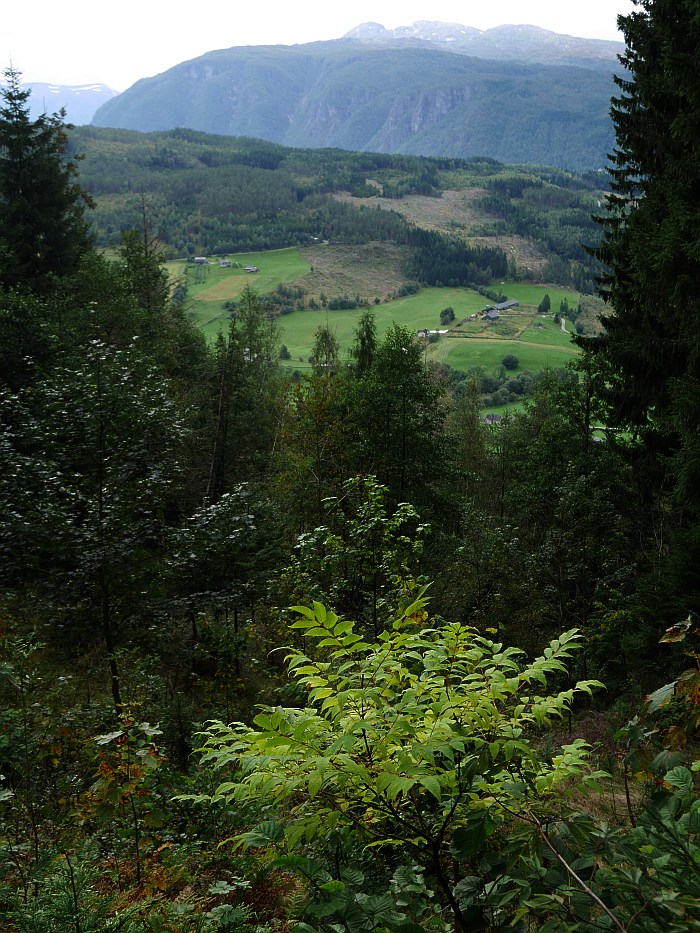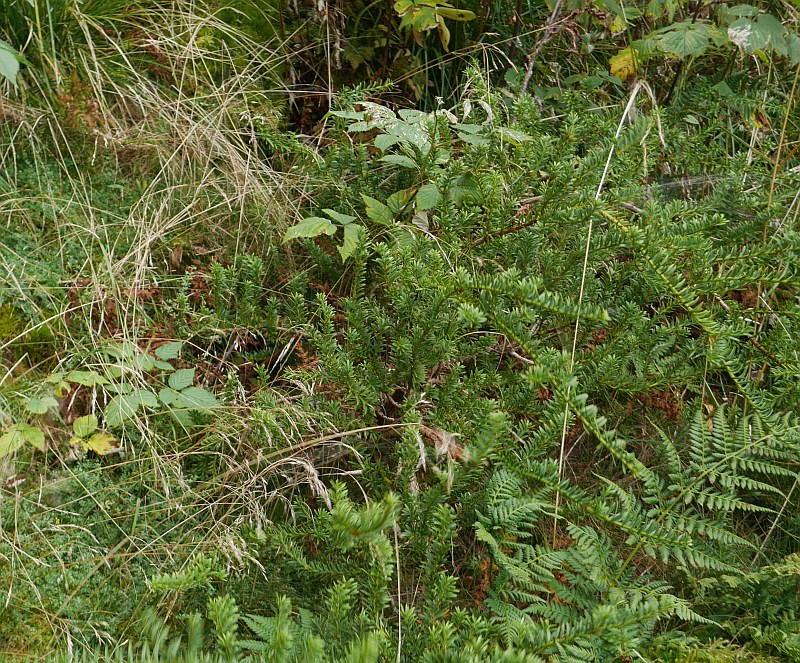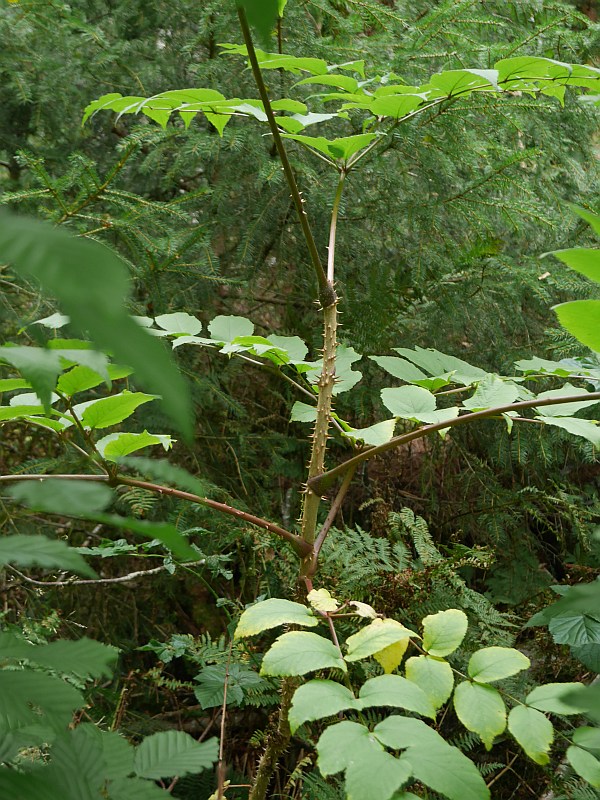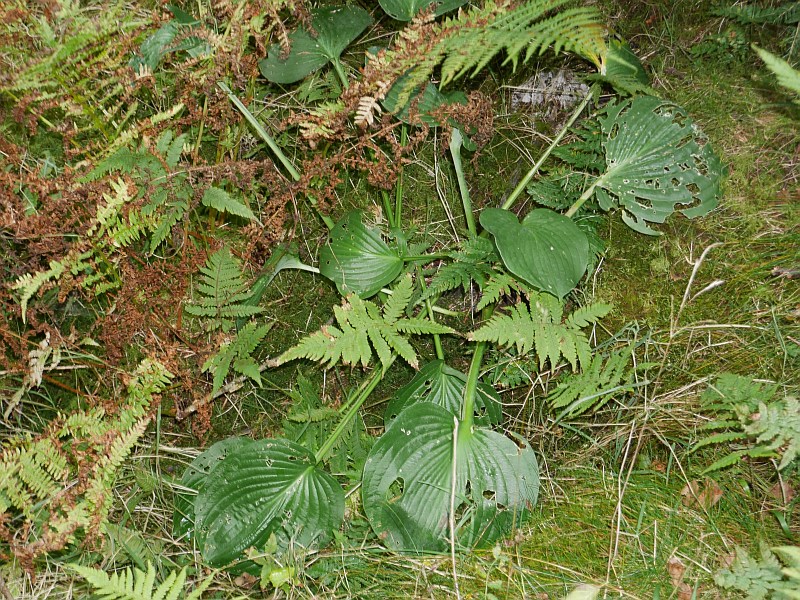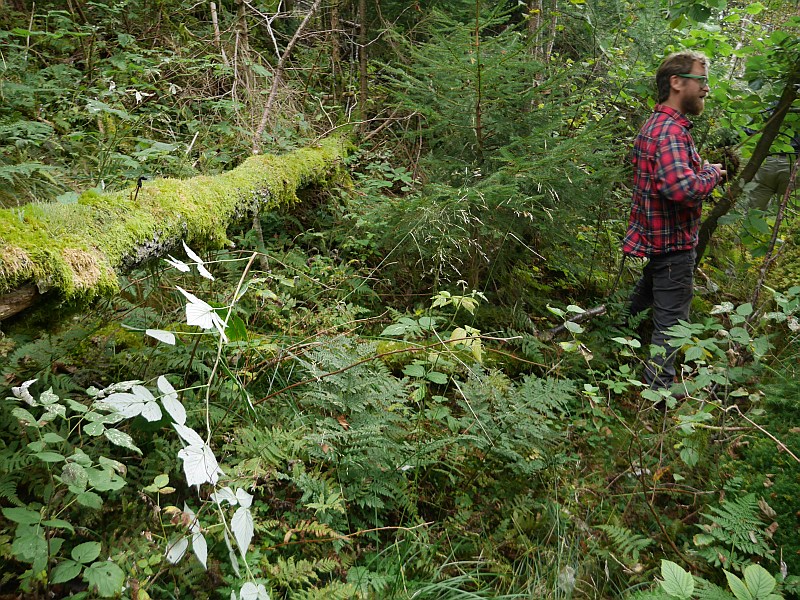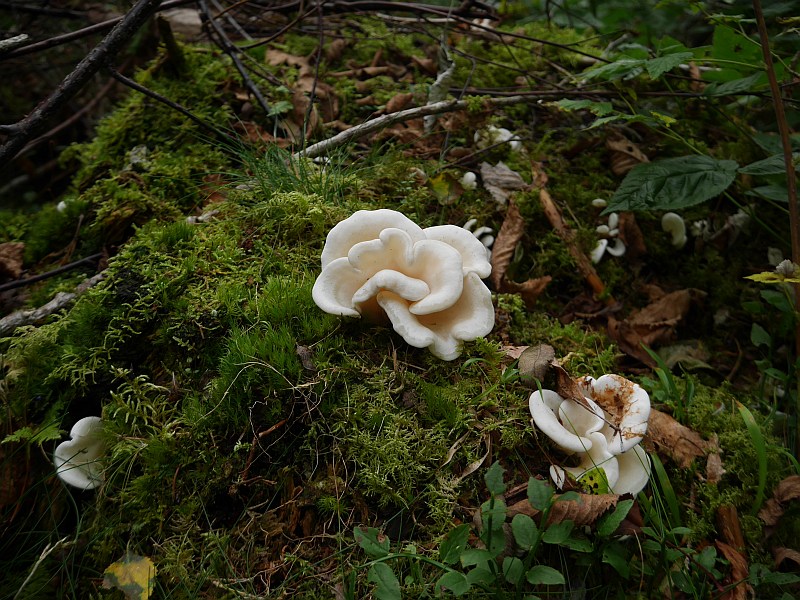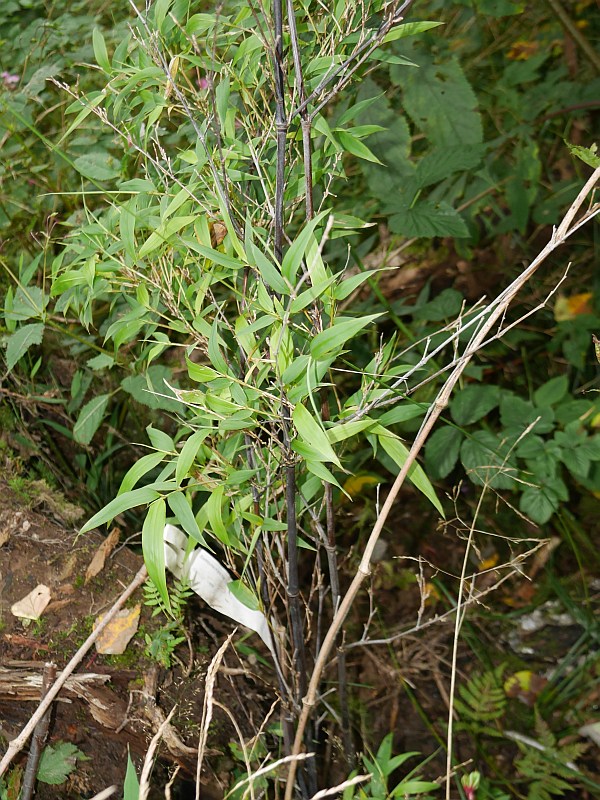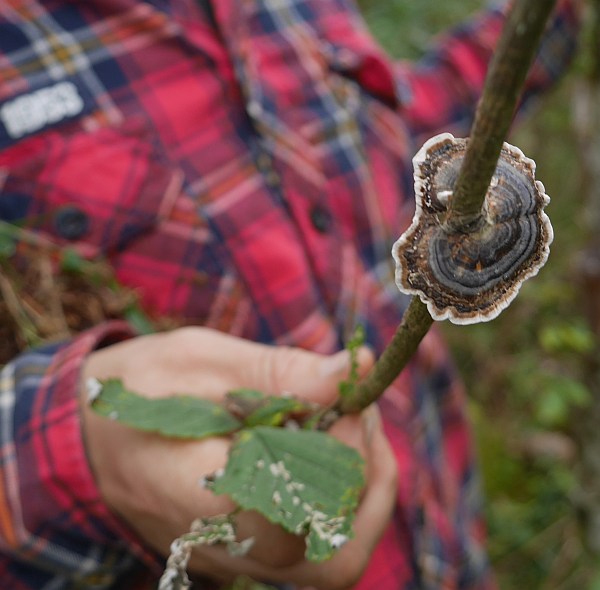In June 2009, I was shown the only naturalised stand of victory onion (Allium victorialis) in south western Norway (away from Lofoten Islands – Vestvågøy – and Bodø area where there are several large populations, possibly a Viking introduction there which has subsequently spread). It’s also found in a damp woodland (which regularly floods in spring) along the Granvinselven (the Granvin river) in south west Norway (see http://www.edimentals.com/blog/?p=10658). It is suggested that the onion came to Granvin by way of the so-called Jektefart (a trade route based on dried fish from Lofoten to western Norway), was planted in a garden close to the site, subsequently naturalising from there!
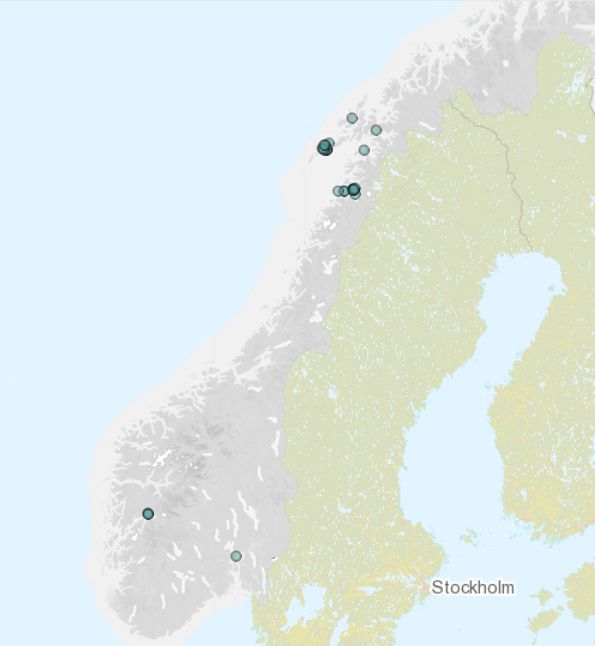
In late October 2014, there was a major flood in western Norway (https://nn.wikipedia.org/wiki/Oktoberflaumen_i_2014) which caused a lot of damage including in Granvin. Over 200mm rain was recorded over 3 days in several places and up to 330mm! Although not a record, it had already rained a lot for most of October and the ground was already saturated when the worst rain happened…leading to a totally unexpected extreme event.
I heard rumours that the victory onion location had been severely impacted by this event, so when we drove past Granvin on the way back from the Nordic Permaculture Festival in Jondal, I took the opportunity to visit the location! This confirmed that the site is much reduced and there is visible signs of erosion including a dried up channel through the middle of the wooded island where the onion is found (the river was very low due to the drought). In addition, I was surprised to find that a path had been constructed between the river and the school. This is part of a major civil engineering work in Granvin to protect the low lying inhabited areas from flooding (see https://www.nve.no/nytt-fra-nve/nyheter-skred-og-vassdrag/granvin-har-fatt-betre-tryggleik-mot-flaum )
A video showing the completed works https://www.youtube.com/watch?v=Keg-BSrAi94 shows aerial views of “victory onion island” between 0:56 – 1:24!
These works may lead to further erosion and destruction of the island….
Seeds were actually already ripe due to the hot summer and I therefore collected seed to safeguard the Granvin onion to be offered to Norwegian Seed Savers (KVANN) through our autumn catalogue which will be produced in October!
From my friend Geir Flatabø: “Jaunssen Gjestgjevarstad (Jaunssen Guest House) in Granvin has begun to harvest / use the onion, and makes pesto served to guests, with good feedback.”
Other relevant articles:
Hagetidend (Norwegian gardening magazine) profile http://www.edimentals.com/blog/wp-content/uploads/2018/07/6_Seiersl%C3%B8k_fra_Vestv%C3%A5g%C3%B8y.pdf
A report from my 2009 “onion safari” to Lofoten, Tromsø and Granvin can be found here (in Norwegian with English comments) http://www.edimentals.com/blog/?p=18527 (some of this material ended up in my book Around the World in 80 plants))

